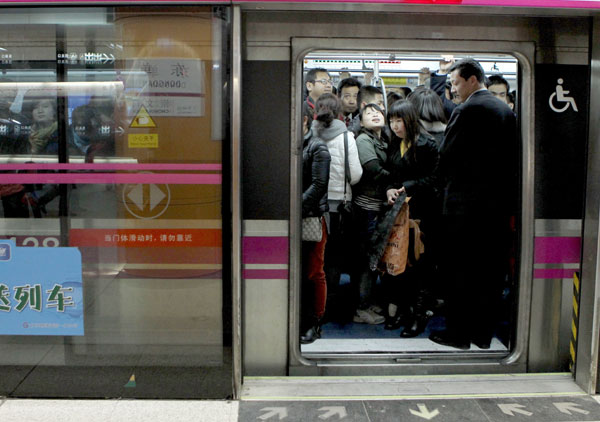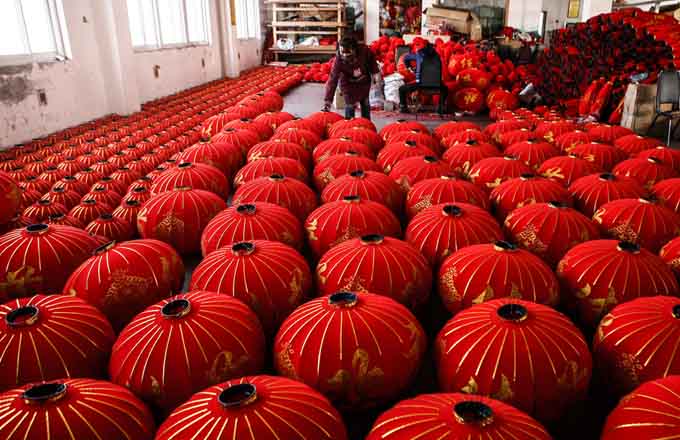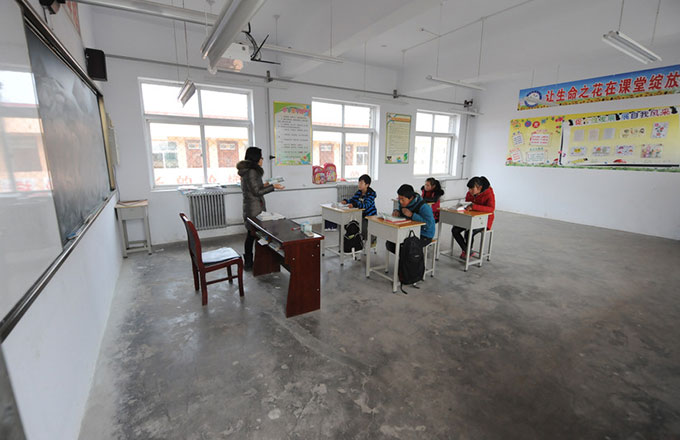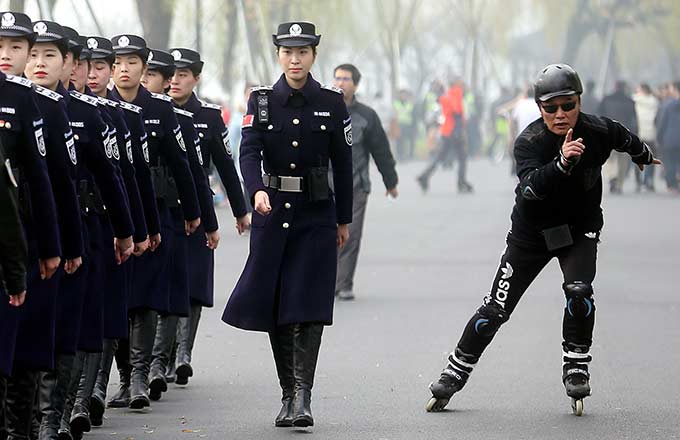Beijing to improve subway flow
Limiting passengers during rush-hour, opening of new lines to ease congestion
The capital will further limit the number of rush-hour subway passengers and increase vehicle capacity to cope with the growing pressure on the network, said the city's transport authority.
In addition, construction of new subway lines will be accelerated to cope with the soaring number of passengers, according to the Beijing Transport Commission.
 |
|
Passengers in a crowded carriage at Dongdan station on the Beijing Subway's Line 5 on Wednesday. The average daily passenger volume for subway lines in early March was 8.4 million. ZHU XINGXIN / CHINA DAILY |
The authorities will also take steps to help guide passengers and prevent crushes and stampedes.
Zhan Minghui, director of the city's rail transit command center, said: "As the capital is more likely to witness a daily passenger flow of 10 million subway riders, the metro system should further extend its capacity."
According to the commission, Beijing's subway lines witnessed a record number of passengers on March 8, with 10.27 million people using the city's rail transit network.
Four of the capital's subway lines carried more than 1 million passengers that day, and the peak passenger flow on Line 10 exceeded 1.69 million, the commission said.
Considering that March does not normally see the peak passenger flow, the network's passenger flow may exceed 10 million more often in the future, especially from July to September, when it is at its busiest, said Zhan.
Zhan said one of the reasons for the significant boost is the increase in the number of subway lines in recent years.
There were only two subway lines in the city in 2002, with a total track length of 54 kilometers and 41 stations.
However, as Beijing put four new lines into operation on Dec 30, the total track length reached 442 km, with 261 stations and 36 transit stations.
The country's longest subway network will further extend its length to 561 km by 2015, with 19 lines. Its total length is expected to reach 1,000 km by 2020.
However, some residents said that despite the increase in the number of subway lines, they did not feel that riding the subway was any easier or more convenient.
"Despite the increase in subway lines and the network's improved capacity, subway cars are still too crowded and sometimes it's hard to squeeze in a car during the rush hour," said Feng Xiuqing, a 27-year-old accountant.
The morning and evening rush hours account for around 40 percent of daily passenger volume, Zhan said.
In addition, the capital's permanent resident population has soared in recent years.
According to the Beijing Population and Family Planning Commission, the capital's permanent resident population in the capital reached 20.69 million by the end of 2012, a 2.5 percent year-on-year increase.
The commission said the city's subway system has launched restrictions on passenger flow at three more stations so far this year - Hujialou, Shuangjing and Jinsong.
Passenger flow limits are in force at 43 stations across the Beijing Subway.
More police officers have been sent to traffic hubs to protect passenger safety and avoid stampedes, according to Beijing Municipal Public Security Bureau.
Zhan added that the cars on subway lines currently under construction will have improved capacity.
Cao Yin contributed to the story.
zhengxin@chinadaily.com.cn




















